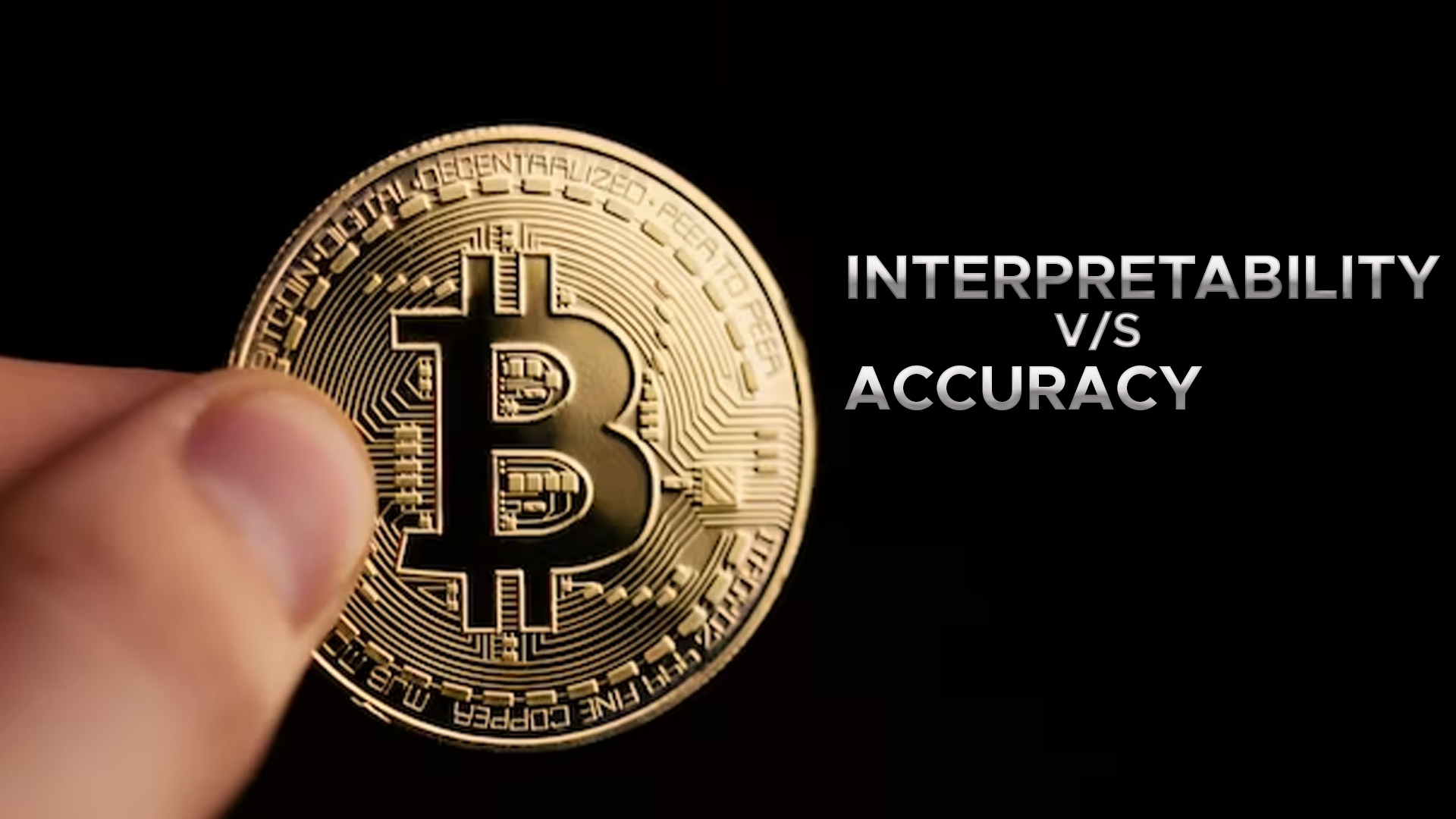- Predictive models in the crypto space are more sophisticated deep learning models than simple machine learning models
- However, complex learning models are more accurate in nature but their interpretability is difficult because of “Black Box” models
The crypto market is all about predictions and luck. However, to make predictions, there are various deep learning models that the crypto investor takes into consideration. These deep learning models are so sophisticated in nature that it becomes difficult for users to interpret them.
But, at the same time, these models are accurate because of their complex problem solving skills. This complexity between being able to accomplish complex problems and understanding how these problems are accomplished is known as the interpretability v/s accuracy dilemma.
This dilemma is often compared with Knowledge vs. Control, Performance vs. Accountability, and Efficiency vs. Simplicity. You can choose any one of the dilemmas from this, and it can be simplified by equalizing the friction between accuracy and interpretability.
Sometimes, deep learning models are created with a technology called “Black Box,” which makes it difficult for the users to interpret besides their accuracy. But, can we make a model where interpretability can be equaled with accuracy so that both features can be attained in a single model.
Interpretability V/s Accuracy Friction
Differences in minds are a vital engine of growth for any ecosystem. There are always adversarial parties, which results in positive conflicts that act as a necessary factor for growth. This helps mankind achieve new levels of performance, which lead to social, biological, and economic evolution.
In the technological world, there are exceptions to this phenomenon. There is always a question that lies in the minds of scientists while making deep learning models. This question is: do they try to get the best results, or do they try to understand how these results are derived from the models?
This question gives birth to our main topic: Interpretability vs. accuracy Many simple machine learning models, like linear regressions or back-propagations are easy to interpret. But, they fall somewhat downward in accuracy-wise. Often, they are also not able to solve complex problems or real world problems.
Many complex learning models, like deep neural networks, are difficult to interpret. They are composed of hundreds of hidden layers or millions of nodes, which helps them solve complex problems. They are often regarded as the “Black Box” models. The main thing about them is that they are accurate in nature.
The answer lies in the hands of the developers and what they want from these models. If they want accuracy, they should go for the deep learning models, which are difficult to interpret. Or if they want easy models to interpret, then they should take into consideration simple learning models like linear regressions.
Conclusion
In a nutshell, there is always an amount to pay for sacrificing anything in the world. You must pay a price in terms of interpretation if you give up precision. Additionally, there should be a cost in terms of accuracy if you want to use a simple deep learning model that is easy to understand.
However, in the future, we can expect more models that are easy to interpret and often provide accuracy. Well, it’s interesting to see where these technological advancements lead mankind in the future.

